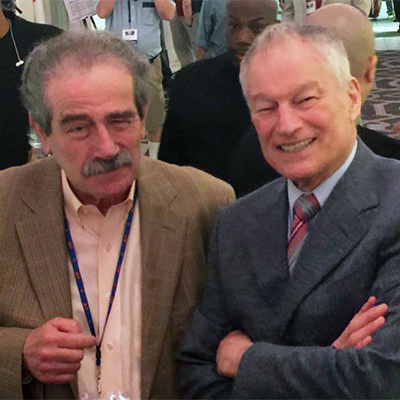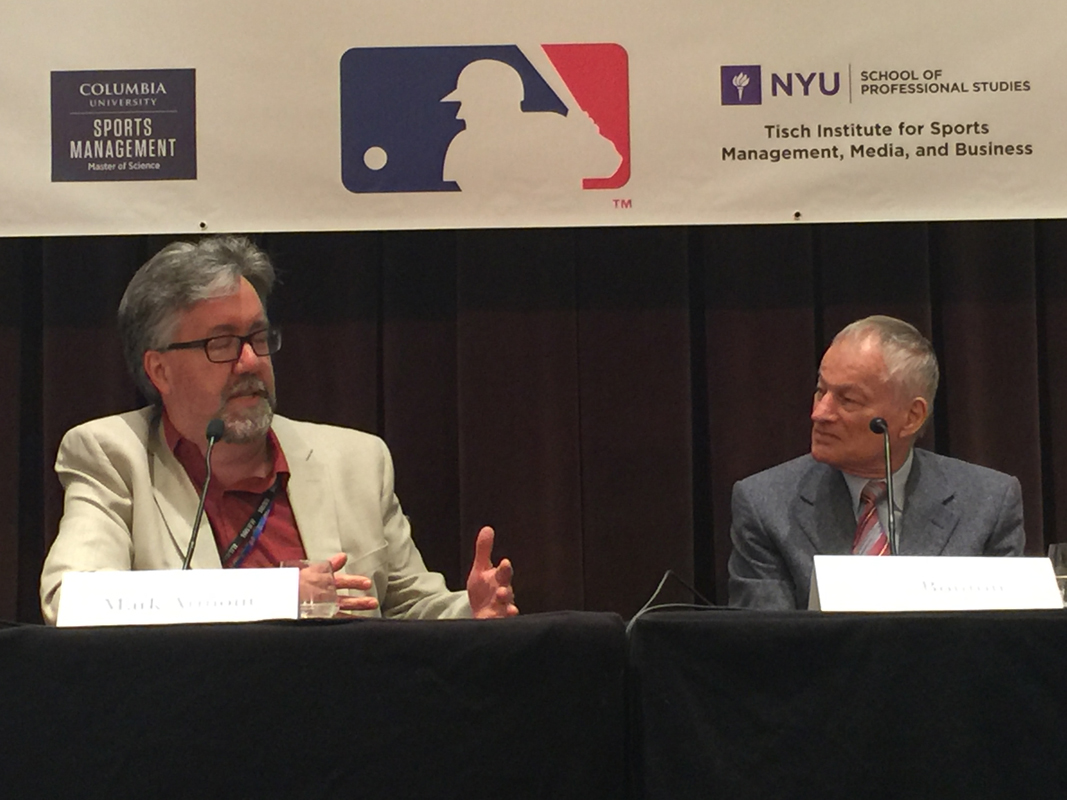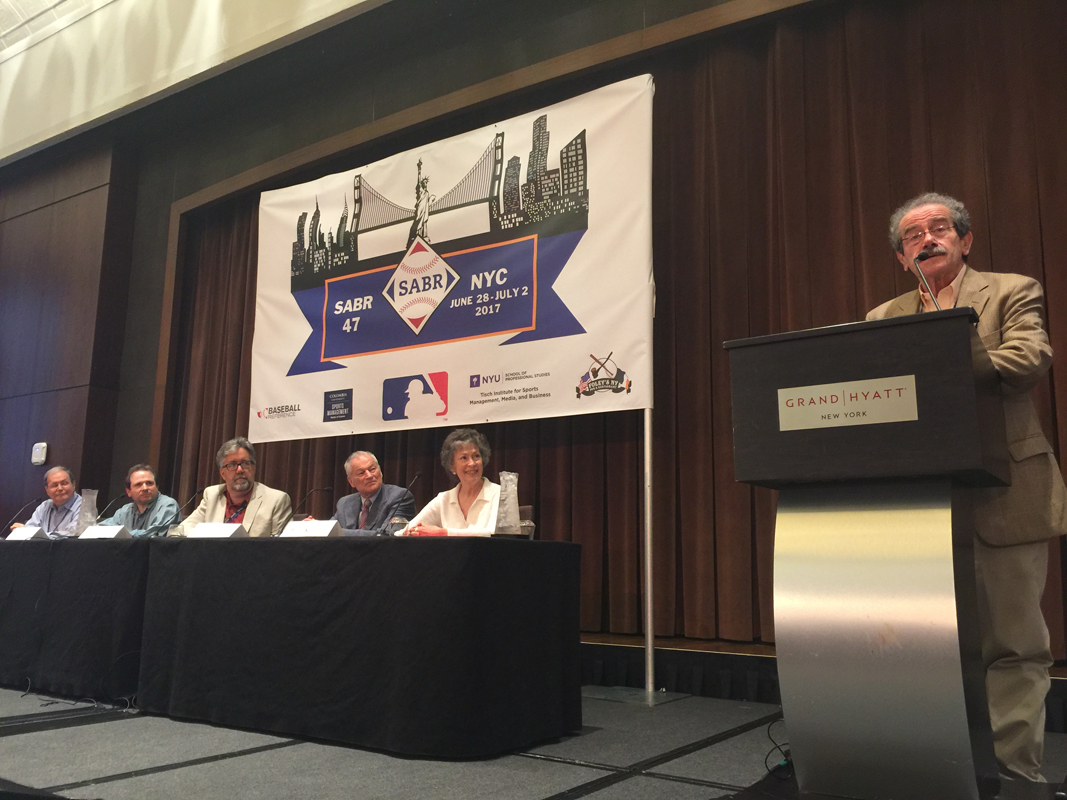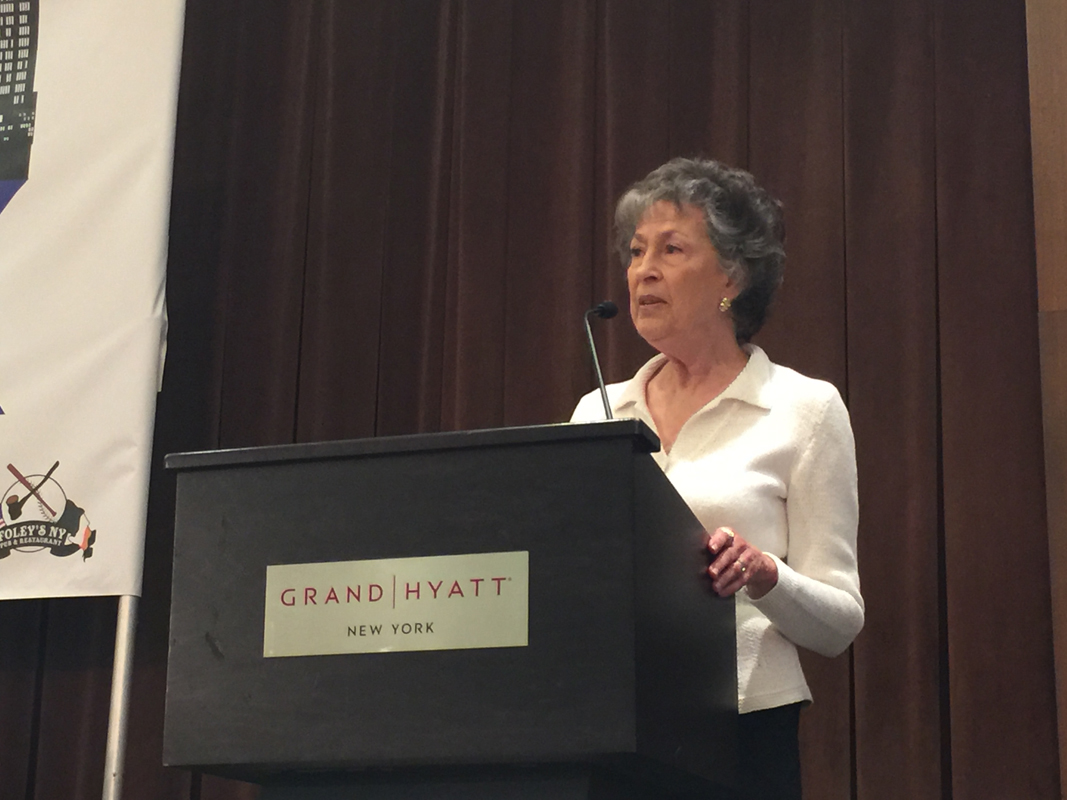SABR 47: Listen to highlights from Jim Bouton: A Life in Baseball panel
At SABR 47 on Saturday, July 1, 2017, the Jim Bouton: A Life in Baseball panel at the Grand Hyatt New York honored one of baseball’s most iconic figures. Bouton was a star pitcher with the New York Yankees and the author of Ball Four, his first-person diary of the 1969 season, which is considered one of the most insightful and humorous books published in the 20th century.
The panel included Bouton, his wife Paula Kurman, authors Mark Armour, Mitchell Nathanson, and Marty Appel, and moderator Jim Thorn, MLB’s Official Historian.
Audio: Listen to highlights from the Jim Bouton: A Life in Baseball panel at SABR 47 (MP3; 53:18)
 Here are some highlights:
Here are some highlights:
ON JIM’S MEDICAL CONDITION
- Kurman: “Some of you may know or have heard that Jim had a stroke five years ago, and lost all language ability for a while. He couldn’t read, write, speak, or understand the spoken word. He recovered from that but it turned out there was an underlying condition on top of it, which is why I’m here. He has something called cerebral amyloid angiopathy. It’s a form of dementia, which he promptly named in his own way, Angelina Homeopathy, so that’s what it is in our house. We wanted to make it public for the first time to you, because we consider this organization to be friends. And we have valued your support and friendship over the years. Little did I know that the article which is in the Sunday [New York] Times sports section this weekend would appear in New York before we got here. But that’s the way it is. … I’m here as a translator. Sometimes he doesn’t need me, it’s a kind of ‘pothole syndrome’ of dementia. He’s perfectly fine, he goes along smoothly, and then there’s a place where something … gets cut out. So if it gets scrambled, either coming in or going out, that’s my function. It turns out we were very lucky that I had degrees in communication, which turned out to be useful.”
 ON MLB’S REACTION AFTER THE RELEASE OF BALL FOUR
ON MLB’S REACTION AFTER THE RELEASE OF BALL FOUR
- Bouton: “It was an interesting time because I didn’t know what was going to be happening, what kind of punishment would be [doled] out. … I met with Bowie Kuhn and he wanted to let me know it was a bad thing that I had done, that I was supposed to behave myself. … I wasn’t nervous at all. To tell you the truth, I was looking forward to [the meeting with the commissioner] because I knew Bowie was a bit of a stiff …”
- Thorn: “Well, he’s very much a stiff now.”
- Bouton: “So [they called me in] to explain myself. ‘What was I thinking?’ [They wanted] pages to be removed from the book, it was bad for baseball, and all of that. I had read it over [the book] just before the meeting to make sure that everything I had said was true. So it was fun for me.”
- Kurman: “The real fear … it was not simply hostility but fear, because what Jim didn’t realize he had done at the time, he up-ended and exposed, he turned over the rock, of unfair labor practices in baseball. It wasn’t simply the drinking …”
- Bouton: “Well, there was some of that, yes.”
- Kurman: “But it was exposing those unfair labor practices that became a very important piece of what happened later and what led to free agency. That’s why they were so afraid, and they were right to be afraid. And they haven’t forgiven him.”
- Bouton: “That’s what I should have said to Bowie Kuhn.”
 ON FAN REACTION TO BALL FOUR
ON FAN REACTION TO BALL FOUR
- Armour: “I first read the book when it first came out. I was 9 years old and I was precisely the person that Bowie Kuhn claimed to have been concerned about: an impressionable young person who played baseball and followed the game. And when I read the book, I loved baseball just as much as I did before or even more. What Bowie Kuhn was right to be worried about was the effect this book had on my views of the way players lived their lives. So that by the time the 1972 strike came along a few years later and I was an 11-year-old snot-nosed kid, I remember talking to my elder neighbors and my father, who were pretty sure the players were pampered and overpaid, and the owners were just in it for the love of the game, and I would say to my father, ‘Yeah, surrrrre’ [echoing a famous line from the book.]”
- Nathanson: “I’m from Philadelphia and I’m a Phillies fan, but you can tell the story without talking about Mike Schmidt. But you can’t tell the story about baseball without talking about Jim Bouton. And that’s what makes it so fascinating to me.”
- Appel: “In many ways, [Bouton] was one of us, he was the first real baseball fan to put on the uniform and went out on the field. He was so different from his teammates in many ways, but in that way in particular. … I loved everything in the book. It forever changed baseball writing. … This is my 50th year in and around the game. I have met so many fans who said, Ball Four made me fall in love with baseball.’ What a great tribute that is to such an important book.”
 ON THE LEGACY OF BALL FOUR
ON THE LEGACY OF BALL FOUR
- Nathanson: “I know Jim doesn’t see himself as a rebel or counter-culture, but I think he was perceived that way. And one of the things that makes Ball Four so interesting is he gave voice to the feelings that a lot of people were having with society in general. And they had been expressed with Vietnam and Nixon, but not really with baseball. And when you read Ball Four, it’s not a political book. But underneath, it is a political book because it’s challenging received wisdom and it gave voice to this thing that a lot of people were feeling but hadn’t expressed at that point. … It really spoke to a generation of people. In retrospect, it looks like Ball Four is inevitable. And they say, ‘Oh, somebody was going to write Ball Four.’ And I would push back against that. Because it’s only when something is written and it seems so natural, that’s what makes it feel inevitable. So Ball Four is of its time, but it’s also something new and different and challenging all of those things.”
- Kurman: “Had this just been a baseball book, I don’t think I would have fallen in love with Jim. I had no interest in baseball and no knowledge of the sport; I’m a lot better now. But I read the book when we first met, and I said, ‘My goodness, this is a sociological study, this is an anthropological study. It’s a classic fable of the young man that goes out into the world and deals with the dangers and the obstacles that he meets. But it’s also as good an anthropological report as any I’ve read in the behavioral sciences. He gets into a group, like Margaret Mead used to do, and he lives in it and he looks around him and he says, ‘Wow, look what they’re doing!’ And you can see what they’re doing because his eyes and ears are the eyes and ears of a journalist. And they’re innocent eyes and ears … he hears in a sense for the first time. He’s always been the little boy who sees that the emperor has no clothes.”
For more coverage of SABR 47, visit SABR.org/convention.
Originally published: July 5, 2017. Last Updated: July 27, 2020.


